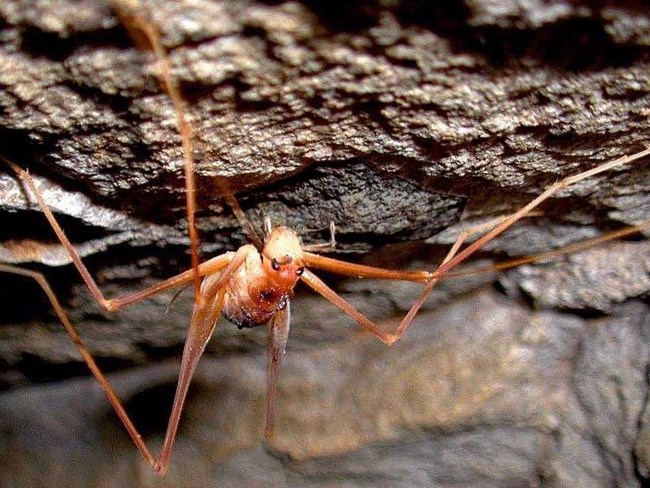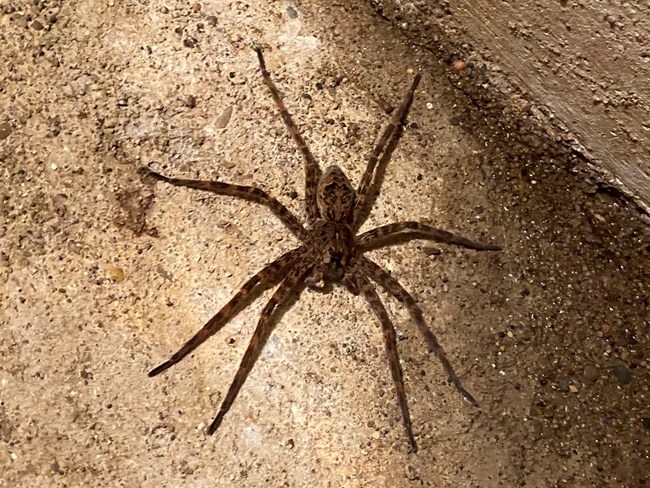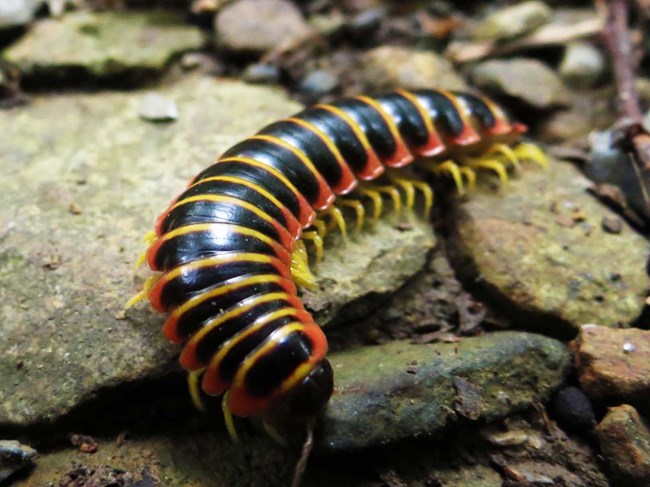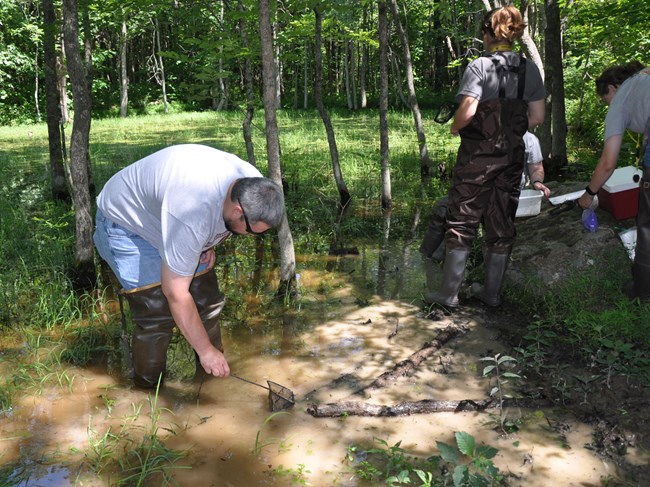|
The park is home to a huge diversity of insects, spiders, centipedes, and millipedes, as well as other invertebrates. Some are found in the park year around, while others migrate or hibernate during the colder seasons. In the cave however, where there is very little variation as the seasons change and no distinction between day and night — here insects are specially adapted to this environment. 
NPS Photo In the CaveInsect and spider species make up a large portion of the array of wildlife found inside Mammoth Cave and the dozens of separate caves in the park. Some of these species prefer areas close to cave entrances, where they can easily exit to forage, and others spend their entire life cycles deep underground out of the reach of sunlight. Common cave cricket Hadenoecus subterraneusCave crickets are often found in the “twilight zone” near cave entrances but can also be found at further depths. They use their long antennae to feel what is around them both in terms of rock surfaces and in terms of air flow, which can be used to indicate the direction of an entrance. These insects are troglophiles, meaning that while they prefer cave environments they can also survive on the surface. 
NPS Photo/ Thomas DiGiovannangelo Surprising cave beetle Pseudanophthalmus inexpectatusThese tiny eyeless beetles, no larger than 1/8th inch in length, have only been found within Mammoth Cave proper and other caves within the park boundary. The surprising cave beetle is one of many different species of cave-dwelling beetles. Continued conservation efforts and research are needed to know more about the behavior of this rare insect. Fishing spider Dolomedes Spp.A few species of spiders can be found living inside Mammoth Cave, some prefer areas close to cave entrances like the fishing spider which can get up to a leg span of 3 inches. Also called dock spiders or raft spiders, these quick arachnids usually hunt aquatic insects and even small fish. Rather than spinning a web, fishing spiders will use ripples in water surfaces to alert them to possible prey and attack. 
CDC Photo/ © Jim Gathany On the SurfaceThe forest ecosystems in the park are home to thousands of species of insects, spiders, centipedes, and millipedes. There are over ten thousand species native to the state of Kentucky, a large majority of these species can be found in the park. TicksTicks are a form of parasitic arachnids that feed on the blood of mammals and birds but have also been known to select reptiles and amphibians as hosts. Some ticks can carry bacteria and viruses that can cause disease in humans and animals. Reducing exposure to ticks and removing ticks promptly can protect you and your family from tick-borne diseases. There are several species of ticks that can be found in Kentucky and at the park. Confirmed tick species found in Kentucky
Species presence in Kentucky still under investigation

NPS Photo/ CATO/ © Kent Walters Black-and-gold flat millipede Apheloria virginiensisThese millipedes can grow to be up to 2 inches in length and have yellow and orange aposematism markings. Like most aposematic animals, when threatened the flat millipede secretes a harmful chemical. This cyanide chemical is primarily harmful to other animals but can cause eye irritation if accidentally rubbed in the eyes. 
NPS Photo Citizen ScienceDragonflies are not only beautiful and exciting thing to see zipping over the surface of a pond, they’re also important to scientific research done at the park. For several years the park Environmental Education program has been part of a citizen science research project in conjunction with the University of Maine. Dragonfly larvae from ponds can be extracted and used to determine that amount of mercury within the water of a pond. This measurement tells us about the health of the pond the larvae are found in, and the health of the environment surrounding it. Learn more about the Dragonfly Mercury Project and how you can get involved at other national park units. |
Last updated: June 25, 2022
